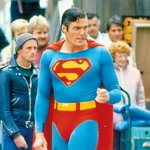 Movies and TV
Movies and TV  Movies and TV
Movies and TV  History
History 10 Things You Never Knew About Presidential First Ladies
 Movies and TV
Movies and TV 10 Zombie Movies That Will Actually Terrify You
 Humans
Humans 10 Times Scientists Were Absolutely Sure… and Absolutely Wrong
 Our World
Our World 10 Pivotal Moments for Life on Earth
 Movies and TV
Movies and TV 10 Most Realistic Medical TV Shows of All Time
 Creepy
Creepy 10 Eerie & Mysterious Ghosts of the Pacific Coast
 Weird Stuff
Weird Stuff 10 Typos That Accidentally Changed History
 History
History 10 Times Trickery Won Battles
 Technology
Technology 10 Awesome Upgrades to Common Household Items
 Movies and TV
Movies and TV 10 Movie Flops That Found Their Way to Cult Classic Status
 History
History 10 Things You Never Knew About Presidential First Ladies
 Movies and TV
Movies and TV 10 Zombie Movies That Will Actually Terrify You
Who's Behind Listverse?

Jamie Frater
Head Editor
Jamie founded Listverse due to an insatiable desire to share fascinating, obscure, and bizarre facts. He has been a guest speaker on numerous national radio and television stations and is a five time published author.
More About Us Humans
Humans 10 Times Scientists Were Absolutely Sure… and Absolutely Wrong
 Our World
Our World 10 Pivotal Moments for Life on Earth
 Movies and TV
Movies and TV 10 Most Realistic Medical TV Shows of All Time
 Creepy
Creepy 10 Eerie & Mysterious Ghosts of the Pacific Coast
 Weird Stuff
Weird Stuff 10 Typos That Accidentally Changed History
 History
History 10 Times Trickery Won Battles
 Technology
Technology 10 Awesome Upgrades to Common Household Items
Top 10 Secrets Of Iconic Hollywood Sounds
[WARNING: This list contains disturbing audio and images.] Sound is both one of the most important and the least noticed parts of a movie. While it’s obviously true that there are entire teams dedicated to perfecting the sound in any professional film, their contributions aren’t as apparent as, say, a stunt artist’s.
See Also: Top 10 Incredible Sounds
We’re not really talking about the background score, either. Some of the most iconic soundtracks of Hollywood aren’t songs at all, but seemingly unimportant sounds like the toilet flush and running water in the basins in bathroom scenes to make them more realistic. Here are ten of the most iconic . . . and, in some cases, disturbing.
10Infrasound And Impending Doom
[WARNING: The youtube video linked here includes subaudible sounds that can cause listeners to suffer extreme discomfort. Please listen with caution.] Gaspar Noé’s 2002 thriller Irreversible evokes some particularly strong feelings. Of course, there’s the very graphic rape scene in the beginning of the movie which we’d highly caution against watching (for those of you who subscribe to such concepts, consider this your “trigger warning”). The rest of the movie is no High School Musical, either, and it’s understandable that it would leave some people with a bad taste in their mouths.
But the horrific scenes of violence are not the only disturbing quality of this film. Many people watching reported feeling an uneasy sense of dread, especially in the more hectic, earlier parts of the film. While many just brushed it off as the filmmaker’s genius, he later admitted to using infrasound to cause the effect in the first 30 minutes of the film.
For those who aren’t familiar with it, infrasound (or subaudible sound) is sound just below our normal hearing range. It doesn’t have to be completely below the threshold, either. Just start approaching the lower end and you’ll begin to “feel” what we’re talking about.
Because people can’t hear the sound but can physically sense it, infrasound ends up causing unexplained feelings of intense dread. It has been effectively – even if sparingly—used in Hollywood ever since they figured out how to reproduce it, as it is highly effective at creating that sense of creeping terror many horror movies leave you with. Interestingly the sound is also associated with many large-scale natural disasters, which suggests that our reaction to it is part of our inbuilt self-defense mechanism.[1]
9That Time Hollywood Made Us All Listen To Animal Sex
Contrary to popular belief, Jeff Goldblum was not the highlight of the Jurassic Park franchise. It is also remembered for some of the best depictions of dinosaurs on the big screen. For an animal we have never seen in the flesh and only know about from scattered remains of bones around the world, the dinosaurs in Jurassic Park were quite believable and multi-dimensional. So how did they know what the dinosaurs sounded like?
Simply put, they didn’t. We usually don’t associate ancient animals with any sound, but we do it with dinosaurs because of Jurassic Park, as they created these sounds out of thin air and were basically the first to do so effectively. For anyone who has wondered how they were made, they’re taken from many animals in various stages of having sex. The velociraptor is voiced by mating tortoises, and the T-rex is dolphins in heat. I wonder how many parents would have made their kids stay home from the cinema if they knew they were about to listen to two hours and seven minutes of animals doing the dirty.[2]
8 Time Dilation In Inception
Inception is one of the few movies that uses sound design as a central part of its storytelling. Hanz Zimmer’s score is hands down one of his best works to date, and much like other aspects of the movie, the score hides quite a few secrets you wouldn’t notice until Listverse saves the day and lets you in on it.
One song that keeps showing up throughout the movie—Edith Piaf’s ‘Non, je ne regrette rien’—is more than just an artistic use of the classic song. As some fans found out, the length of the song—2:28 minutes—may have directly influenced the length of the movie . . . 2:28 hours.
More eagle-eyed and hardcore fans, however, had their ears on even more mind-blowing references in the background score, because the famous French song is referred to in other secret places too. As you can see in the clip above, the music in the dream sequences is stretched out and heavy in bass. The time signature of the music in the dreams actually perfectly corresponds with the song, only stretched out according to the time dilation you’re supposed to experience in the dreams, and tweaked to make it sound better.[3]
7 Star Trek’s Warp Drive
Star Trek will always be remembered for its innovative use of everyday sounds. This makes sense as they had to come up with a lot of new sounds owing to the vast scope of their futuristic setting at a time that no one had really gone there before. The most distinctive and innovative creation of a sound in the series is probably the warp drive.
While it’s easy to imagine the warp sound from movies in 2020, it wasn’t back then. The sound designer, Doug Grindstaff, wanted to make an authentic effect that would serve as a blueprint for all warp drive sounds in the future, and he was successful to a large extent, too.
For the sound, he went back to his college and borrowed a test oscillator from the physics lab. The resulting warp-drive sound effect will now forever be in the human consciousness. The sounds in Star Trek – along with a few other pioneering movies – defined the genre for decades to come. What a legacy![4]
6 The Lightsaber
Star Wars is another classic franchise that came up with quite a few unique ways to convey its sound, especially its brilliant and iconic score. Its biggest breakthroughs in sound design, though – much like most of the other entries on this list – lie in sounds that we don’t even notice.
Take the lightsaber. While most people these days would think that it was generated by some kind of a computer, we forget that technology wasn’t as advanced as it is today. The sound was – like a lot of iconic sounds in Hollywood – made by something found in the junk. More specifically, it was made by the hum of an idle film projector combined with the static buzz of a television.
For another classic sound from the series, the iconic ‘pew pew’ sound of the blaster gun was made by a guy smacking a thick wire with a hammer. I want his job![5]
5 Psycho Stabbing
When it comes to psychological horror that gets under your skin while not being overtly visible, Alfred Hitchcock set the benchmark. His movies are some of the most iconic psychological thrillers of all times, and for good reason, too. His use of innovative camera techniques and sound design became the standard for many notable works of the genre since then. Psycho is, no doubt, the most iconic of these. It was made using tools and techniques that were clever as well as genre-defining.
One notable scene is when he murders his hotel guest in the shower—the scene most of us imagine when we think of the movie. The sound design of the sequence was central to its successful execution (so to speak), and it didn’t disappoint. Particularly unique in its time was that it was completely free of any music, heightening the tension of the scene.
Many innovative techniques were used to come up with the sparse sounds that made it to the final edit. The sickening sound of the stabs, for example, was made by stabbing casaba melons. Now that I’ve told you that, watch the clip above and you’ll recognize the sound immediately for what it really is.[6]
4 The Ringwraiths Of The Lord Of The Rings
The Lord of the Rings was the beginning of a new era of fantasy cinema, and—much like its source material – played a pivotal role in defining that genre as we know it today. Of course, much like all aspects of the movie, the sound was brilliantly done, with quite a few cool little secrets involved.
The sound of the Ringwraiths, for one, was made by rubbing plastic cups together. Suddenly they don’t seem so terrifying, right? Another iconic sound from the movie, Balrog’s weird crackling growls, was recorded from the sound of rocks grinding on the floor. It’s probably best that we stop there or you’ll never be able to enjoy the film series in the same way again.[7]
3 The Mysterious Punching Sounds In Raging Bull
The sound of the punch is one of the most iconic and recognizable sounds in Hollywood, as well as one of the most unnoticed (at least when it’s done well). Whenever we hear it in a movie, we tend to not even register it.
As it turns out, we actually owe a lot of those sounds to Raging Bull, which was the first movie to really play with the acoustics of a bar fight. The movie uses many different types of sounds according to the mood of the different fights in the movie, giving them a dimension most of us wouldn’t even have explicitly noticed. It remains one of both Martin Scorsese and and sound editor Frank Warner’s best works. To this day they have never revealed how any of those sounds were made. This secret, alas, is one that remains a mystery for now. But next time you notice an amazing punch sound in a film or TV show, you know you have Raging Bull to thank.[8]
2 The Wilhelm Scream
Sound design is a vital part of any movie, with some sounds becoming so associated with a movie that they effect how we remember these works of fiction forever. Some sounds, however, transcend genres. The Wilhelm Scream, which should be no stranger to Listverse readers, is by far the most popular and used voice sample in movies, and you just need to hear it to instantly recognize why. So watch the video above for a rather hilarious, albeit horribly low-quality, series of clips showing the sound featured in different films.
As the name suggests, it’s the sound of a human scream. It was first heard in a movie made in 1951, though it wasn’t until it was picked up by Warner Brothers and used in the 1953 film ‘The Charge at Feather River’ that it really gained popularity. Since then, the iconic Wilhelm Scream has been used to simulate the sound of people falling or getting shot in hundreds of movies.
If you’ve seen any popular movie of the last five decades – like Star Wars, Avengers, Avatar, The Hunger Games, or Indiana Jones – you already know what this sounds like . . . you just may not realize it.[9]
1 The Art Of Foley Effects
In case you didn’t notice, most of the sound effects we have spoken about aren’t over-the-top musical numbers that require creative genius to produce. They are everyday sounds that make moments in movies seem so realistic we don’t even notice. It’s due to these techniques that film making in Hollywood reached such a peak that it was possible to enter a movie theater and get lost in a fantasy world for two hours. Of course nowadays its our livings rooms we get lost in thanks to the likes of ThePirateBayAppleTV and Disney+.
If there’s one person we owe all of that too, it’s Jack Foley, the sound effects engineer who pioneered the technique of taking common objects and using them to re-create the sounds of humans and their interactions with the physical world. This art (and it really is an art—see the video above for proof) is named after him, and it’s one of those jobs that you won’t notice if it’s done well.[10]
For more lists like this, take a look at 8 Incredible Resurrected Ancient Sounds, and 10 Artificial Sounds We Hear Every Day








